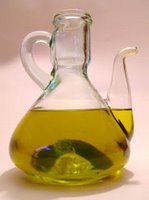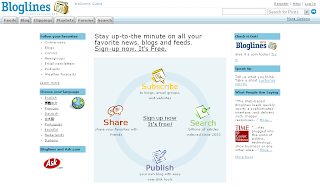
This is a collection of articles I have found interesting in the weekly editions of the "big five" medical journals: NEJM, JAMA, Annals, Lancet and BMJ (a few more journals are included occasionally). The review is a weekly feature of
Clinical Cases and Images - Blog. Please see the end of the post for a suggested time-efficient way to stay up-to-date with the medical literature.
-----------
Stents versus Coronary-Artery Bypass Grafting for Left Main Coronary Artery Disease: No Difference.
NEJM, 04/2008.
There was no significant difference in the risk of death, Q-wave myocardial infarction, or stroke between patients receiving stents and those undergoing CABG. However, stenting, even with drug-eluting stents, was associated with higher rates of target-vessel revascularization than was CABG.
-----------
Home Use of Automated External Defibrillators for Sudden Cardiac Arrest: Not Helpful.
NEJM, 04/2008.
The most common location of out-of-hospital sudden cardiac arrest is the home, consequently, home use of an automated external defibrillator (AED) might offer an opportunity to improve survival. In this study of survivors of anterior-wall myocardial infarction, access to a home AED did not significantly improve overall survival.
-----------
Carotid bruits as a prognostic indicator of cardiovascular death and myocardial infarction: a meta-analysis. The Lancet 2008; 371:1587-1594.
The rate of myocardial infarction in patients with carotid bruits was 3·69 per 100 patient-years compared with 1·86 per 100 patient-years in those without bruits. Yearly rates of cardiovascular death were also higher in patients with bruits than in those without (2·85 per 100 patient-years vs 1·11 per 100 patient-years). In the four trials in which direct comparisons of patients with and without bruits were possible, the odds ratio for myocardial infarction was 2·15 and for cardiovascular death 2·27. Auscultation for carotid bruits in patients at risk for heart disease could help select those who might benefit the most from an aggressive modification strategy for cardiovascular risk.
-----------
Use of Multiple Biomarkers to Improve the Prediction of Death from Cardiovascular Causes: Useful.
NEJM, 05/2008.
The combination of biomarkers reflects myocardial cell damage, left ventricular dysfunction, renal failure, and inflammation (troponin I, N-terminal pro–brain natriuretic peptide, cystatin C, and C-reactive protein). In elderly men (mean age 71), the simultaneous addition of several biomarkers of cardiovascular and renal abnormalities improves the risk stratification for death from cardiovascular causes beyond that of a model that is based only on established risk factors.
-----------
Cardiac Troponin and Outcome in Acute Heart Failure: Positive troponin predicts worse outcome.
NEJM, 05/2008.
This is a Cleveland Clinic study and I have the privilege of knowing the principal investigator and author, W. Frank Peacock, IV, who works in our ED.
Patients who were positive for troponin had lower systolic blood pressure on admission, a lower ejection fraction, and higher in-hospital mortality (8.0% vs. 2.7%) than those who were negative for troponin. The odds ratio for death in the group of patients with a positive troponin test was 2.55.
In conclusion, in patients with acute decompensated heart failure, a positive cardiac troponin test is associated with higher in-hospital mortality.
-----------
Efficacy and Safety of Recombinant Activated Factor VII for Acute Intracerebral Hemorrhage: No Clinical Difference.
NEJM, 05/2008.
Intracerebral hemorrhage is the least treatable form of stroke. This trial did not confirm a previous NEJM study in which recombinant activated factor VII (rFVIIa) improved survival and functional outcomes. Factor VII still reduced growth of the hematoma though, it just did not make a clinical difference.
The growth in volume of intracerebral hemorrhage was reduced by 2.6-3.8 ml. The frequency of thromboembolic adverse events was similar in the 3 groups; however, arterial events were more frequent in the group receiving 80 µg of rFVIIa than in the placebo group (9% vs. 4%, P=0.04).
Hemostatic therapy with rFVIIa reduced growth of the hematoma but did not improve survival or functional outcome after intracerebral hemorrhage.
-----------
Etiquette-Based Medicine. NEJM, 05/2008.
This is a possible checklist for the first meeting with a hospitalized patient:
1. Ask permission to enter the room; wait for an answer.
2. Introduce yourself, showing ID badge.
3. Shake hands (wear glove if needed).
4. Sit down. Smile if appropriate.
5. Briefly explain your role on the team.
6. Ask the patient how he or she is feeling about being in the hospital.
-----------
Corticosteroids and Mortality in Children With Bacterial Meningitis: Steroids seem to be helpful in adults but not in children.
JAMA, 05/2008.
In adults, adjuvant corticosteroids significantly reduce mortality associated with bacterial meningitis; however, in children, studies reveal conflicting results.
In this study, of children with bacterial meningitis, adjuvant corticosteroid therapy was not associated with time to death or time to hospital discharge.
-----------
Effect of Folic Acid and B Vitamins on Risk of Cardiovascular Events and Total Mortality Among Women at High Risk for Cardiovascular Disease: Not Useful.
JAMA, 05/2008.
After 7.3 years of treatment and follow-up, a combination pill of folic acid, vitamin B6, and vitamin B12 did not reduce a combined end point of total cardiovascular events among high-risk women, despite significant homocysteine lowering.
The
Polypill proposed by BMJ should not include folic acid after all. In the light of recent evidence, it looks like we should skip the beta-blocker too.
-----------
National Institutes of Health Consensus Development Conference Statement: Hydroxyurea Treatment for Sickle Cell Disease. Annals of Int Med, 05/2008.
Vaccines and Autism Revisited — The Hannah Poling Case. NEJM, 05/2008.
Like Night and Day — Shedding Light on Off-Hours Care. NEJM, 05/2008.
Related:
5 Tips to Stay Up-to-Date with Medical LiteratureMake Your Own "Medical Journal" with iGoogle Personalized PageShare iGoogle Tabs with Medical Journals, Podcasts and GadgetsText-to-Speech Programs and Continuous Medical EducationImage source:
OpenClipArt, public domain.
 A Mediterranean diet, already known to protect against heart disease, also appears to decrease risk of developing diabetes according to a prospective study of 13,380 Spanish university graduates without diabetes at baseline followed up for 4.4 years.
A Mediterranean diet, already known to protect against heart disease, also appears to decrease risk of developing diabetes according to a prospective study of 13,380 Spanish university graduates without diabetes at baseline followed up for 4.4 years.






























